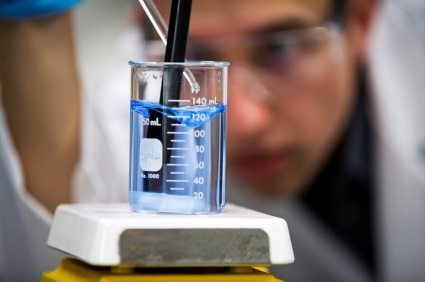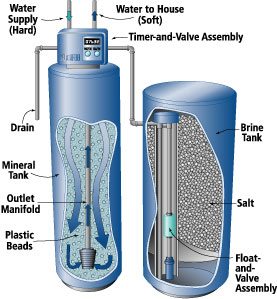 Many Katahdin Cedar Log Homes are situated in rural settings and are serviced by private wells. Unlike municipal water systems, wells draw water direct from the ground and may require treatment to protect against contaminants as well as remove damaging concentrations of minerals.
Many Katahdin Cedar Log Homes are situated in rural settings and are serviced by private wells. Unlike municipal water systems, wells draw water direct from the ground and may require treatment to protect against contaminants as well as remove damaging concentrations of minerals.
Test First
Ideally when purchasing the land, you were able to inquire about the quality and availability of ground water in the immediate area of the building site. Local knowledge of any problems, including agricultural runoff, industrial contamination and surrounding soils would direct you to a site that had the potential of a safe and clean water supply. Good sources for water information include the local state extension office, well companies, neighboring homeowners, and the environmental protection agency.
Once you’re ready to dig or drill for water, you’ll want to have a good idea of where the home and septic will be sited, geographical considerations and other infrastructure requirements to situate the well head in an appropriate location. Once the water source is reached, you’ll want to send a sample for testing. Several things may appear in tested water that will require attention to keep your family safe. Assuming that the water tests as safe to drink, a number of filtration systems are available to improve water quality and that are practical for home use.
Mechanical filters are used to remove suspended material from water, including sand, silt clay or organic material. Shallow or dug wells are most likely to need particulate filtration. The filters are generally set up on the incoming water line or attached to a holding tank that services the entire domestic water supply. They require regular service.
 Activated carbon filters (left) are used to remove undesirable tastes and odors, organic compounds and any residual chlorine from water. Most inorganic chemicals, metals, microorganisms and nitrates are not removed. If the well water has shown low levels of hazardous contaminants such as radon gas, trihalomethanes or dissolved organics, a whole house system can be effectively used.
Activated carbon filters (left) are used to remove undesirable tastes and odors, organic compounds and any residual chlorine from water. Most inorganic chemicals, metals, microorganisms and nitrates are not removed. If the well water has shown low levels of hazardous contaminants such as radon gas, trihalomethanes or dissolved organics, a whole house system can be effectively used.
Oxidizing filters remove metals such as iron and manganese, and hydrogen sulfide, which produces a rotten egg smell. The unit uses a manganese-zeolite coated filter that causes the dissolved metals to form particles that the filter traps. These are used in households where a water softening system is not desired. The maintenance for the filter requires periodic rinsing with a chemical solution to remove the metal particles.
Reverse Osmosis pressurizes water then passes it through a semipermeable membrane to filter out up to 90 percent of mineral and biologic impurities. They are quite effective in removing a good portion of contaminants but for some organic compounds, such as nitrates, the effective removal is less.
Reverse osmosis are most often setup up in a series with a mechanical filter first in line from the well to remove sediment and particulates. The  reverse osmosis unit is then engaged, and the water then flows into an activated carbon filter for further removal of organics. The downside of reverse osmosis is that it uses a lot of water to achieve its results. Up to 75 percent of water used is discarded with the contaminants, making it an unlikely choice for whole house filtration, but can be useful for limited water use such as cooking and drinking water. Its water consumption also makes it a poor choice for areas with water shortages.
reverse osmosis unit is then engaged, and the water then flows into an activated carbon filter for further removal of organics. The downside of reverse osmosis is that it uses a lot of water to achieve its results. Up to 75 percent of water used is discarded with the contaminants, making it an unlikely choice for whole house filtration, but can be useful for limited water use such as cooking and drinking water. Its water consumption also makes it a poor choice for areas with water shortages.
Ion Exchange Filters (Water softeners) are probably the most common water treatment to address water hardness from excess calcium or magnesium. The hard water is pumped into a tank containing a resin that exchanges the sodium for the minerals(see right). The sodium remains dissolved in the softened water. Most companies supplying these systems include a regular maintenance and filling program. However, sodium based water softeners are not recommended for persons with limited salt intake.
Whatever the condition of your water, your local water specialist will be able to diagnose and recommend an appropriate water treatment system.
